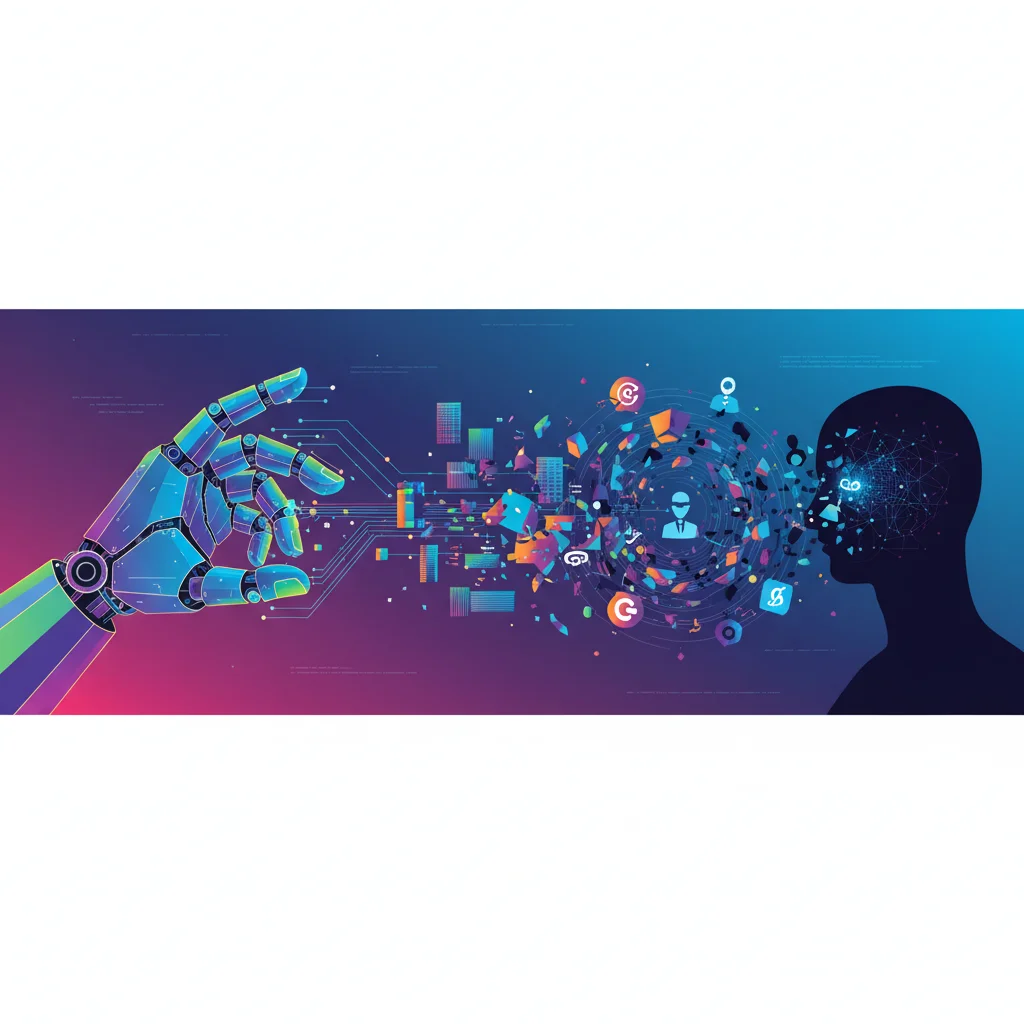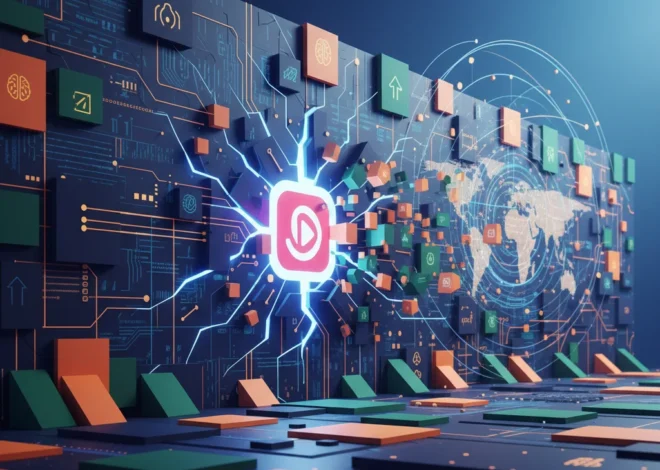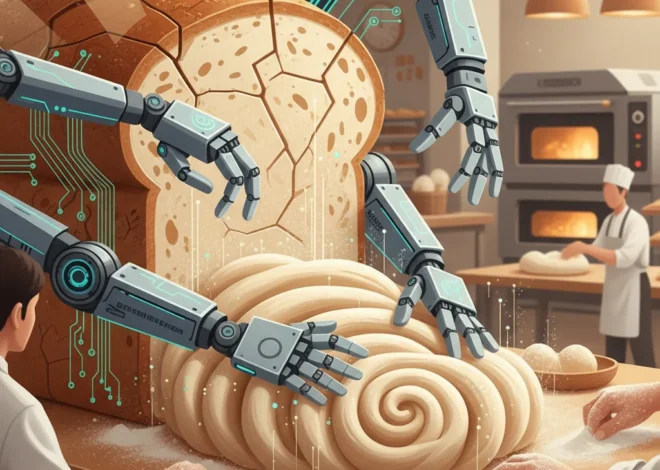
AI Isn’t Firing You… Yet. The Real Story Behind Tech’s Layoff Storm
Scroll through your news feed, and you’ll see the headlines. They’re stark, a little scary, and they all tell a similar story: Big Tech is laying off thousands, and the looming shadow of Artificial Intelligence is to blame. The narrative is simple, seductive, and terrifying: the robots are coming for our jobs, starting with the very industry that created them.
It’s a powerful story. But like many powerful stories, it might be more fiction than fact.
While the layoff announcements are painfully real for those affected, the data paints a much more nuanced picture. The wave of job cuts sweeping through the tech world isn’t a simple tale of human vs. machine. It’s a complex story of economic correction, strategic pivots, and a fundamental reshaping of what skills are valuable. Blaming AI is easy; understanding the reality is essential for anyone building a career or a business in tech today.
In this deep dive, we’ll dissect the numbers, separate the hype from the reality, and explore what’s truly driving the current tech job market. Hint: It has more to do with spreadsheets from 2022 than with the software of 2024.
The Narrative vs. The Numbers: A Tale of Two Tech Industries
The headlines are dominated by big numbers from giants like Google, Amazon, and Meta. These companies are indeed cutting staff, leading to a widespread sense of anxiety. The easy conclusion is that new, powerful AI tools are making human roles redundant. But when you look closer at who is being laid off, the story changes dramatically.
Recent analysis reveals a fascinating trend: the cuts are not falling evenly. While companies are talking a big game about becoming “AI-first,” the roles being eliminated are overwhelmingly in non-technical areas. According to data highlighted by the Financial Times, the jobs most at risk are in sales, marketing, human resources, and project management. Meanwhile, the demand for core engineering talent, especially those with skills in artificial intelligence and machine learning, remains incredibly robust.
This isn’t an AI revolution; it’s a classic corporate restructuring. It’s a story about a return to fundamentals after a period of unprecedented, and perhaps unsustainable, expansion.
The Post-Pandemic Correction We All Saw Coming
To understand today’s layoffs, we have to rewind to 2021 and 2022. Fueled by near-zero interest rates and a pandemic-driven surge in digital demand, the tech industry went on a hiring spree of historic proportions. The mantra was “growth at all costs.” Companies expanded their headcounts at a breakneck pace, building out massive teams in every conceivable function—not just programming and software development, but also in the support and growth machinery around the core product.
Then, the music stopped. Inflation soared, interest rates climbed, and investor sentiment shifted on a dime. The new mantra became “profitable growth” and “efficiency.” VCs and Wall Street suddenly wanted to see a clear path to profitability, not just exponential user growth. The “fat” that companies had packed on during the boom years was now seen as a liability.
As a result, executives are now making tough decisions to streamline operations. The roles being cut are often those that were rapidly scaled during the boom and are now being consolidated or deemed non-essential in a leaner, more focused organization. This is less about a robot taking a salesperson’s job and more about a CFO deciding the company can hit its targets with a smaller sales team (source).
This reality is reflected in the hiring patterns we’re seeing. While some roles are being eliminated, companies are fighting tooth and nail to hire and retain talent in others. The table below illustrates this “great skill shuffle.”
The Great Tech Skill Shuffle: Who’s Out vs. Who’s In
The current job market isn’t just about cuts; it’s about reallocation. Resources and headcount are being shifted from legacy operations to future-focused initiatives, primarily centered around AI, cloud infrastructure, and cybersecurity.
| Roles Seeing Reductions or Consolidation | Roles in High Demand |
|---|---|
| Generalist Sales & Marketing | AI/ML Engineers & Researchers |
| Talent Acquisition & HR Generalists | Data Scientists (specializing in LLMs) |
| Middle Management & Project Managers | Cloud & DevOps Engineers |
| Non-Core Product Divisions | Cybersecurity Analysts & Architects |
| Customer Support (Tier 1) | Prompt Engineers & AI Product Managers |
So, Where Does AI *Actually* Fit Into This?
If AI isn’t the primary driver of these specific layoffs, what is its role? The impact is real, but it’s more about augmentation and skill-shifting than outright replacement.
1. Augmenting Productivity: For many roles, AI is becoming a powerful “co-pilot.” A marketer can use generative AI to brainstorm campaign ideas in minutes. A developer can use GitHub Copilot to write boilerplate code and debug faster. This increased productivity might mean a team of 5 can now do the work of 7, which can lead to slower hiring or consolidation over time. It’s a story of efficiency, not obsolescence.
2. Creating New Roles: The innovation spurred by AI is creating entirely new job categories that didn’t exist a few years ago. Roles like “Prompt Engineer,” “AI Ethicist,” and “Machine Learning Operations (MLOps) Specialist” are emerging and in high demand. Companies need people who can build, fine-tune, deploy, and secure these complex AI systems.
3. Driving Demand for Core Skills: Building powerful AI requires immense infrastructure. This drives a massive demand for experts in cloud computing, distributed systems, and data engineering. Furthermore, as AI becomes more integrated into every piece of software and SaaS product, the need for robust cybersecurity has never been greater. Protecting sensitive training data and securing AI models from attack is a top priority for startups and enterprises alike. A survey of job postings shows that while overall tech hiring may have cooled, listings mentioning AI skills have surged (source).
After the Breach: Why the M&S and TCS Split is a Landmark Moment for Corporate Tech
What This Means for You: How to Thrive in the Age of AI
Instead of fearing the headlines, the savvy tech professional, entrepreneur, or developer should see this moment as one of immense opportunity. The deck is being reshuffled, and those who play their cards right will win big. Here’s how to position yourself for success:
- For Developers & Engineers: Your programming skills are more valuable than ever, but their application is changing. Don’t just be a coder; be a problem-solver who can leverage AI. Focus on learning how to work with large language models (LLMs), integrate AI APIs into applications, and understand the fundamentals of machine learning. The future isn’t about knowing a language; it’s about knowing how to make the machine think.
- For Entrepreneurs & Startups: The opportunities for innovation are boundless. The next wave of billion-dollar companies will be built on AI. Focus on creating SaaS products that use automation and AI to solve specific, painful problems for businesses. Think less about building the next foundational model and more about applying existing models in novel ways to disrupt an industry.
- For Tech Professionals in Non-Technical Roles: The key is to become AI-literate. You don’t need to code, but you do need to understand what AI can and can’t do. Learn how to use AI tools to make yourself radically more efficient in your role. Become the person on your team who understands how to leverage AI for marketing analytics, sales prospecting, or project planning. The future belongs to those who partner with the machine, not those who run from it.
The Billion-Dollar AI Hangover: Why Your New Tools Are Collecting Dust
The Beginning, Not the End
The tech industry is in a state of flux. The current layoffs are a painful but necessary correction after an unsustainable period of growth. While AI serves as a convenient narrative, the root causes are far more traditional: economic cycles and a strategic shift towards efficiency.
The real impact of artificial intelligence won’t be a sudden wave of mass unemployment, but a gradual, profound transformation of how we work, what we build, and which skills we value. This is a moment of creative destruction, where old roles evolve and new ones are born. It’s a time for learning, adapting, and building. The storm will pass, and those who have used this time to sharpen their skills and embrace the new paradigm will be the ones who build the future.


